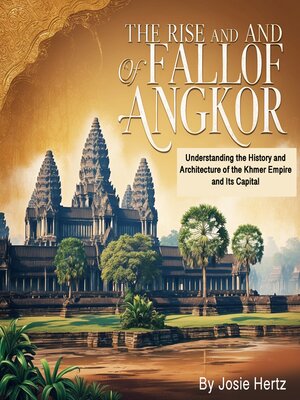The Rise and Fall of Angkor
audiobook (Unabridged) ∣ Understanding the History and Architecture of the Khmer Empire and Its Capital
By Josie Hertz

Sign up to save your library
With an OverDrive account, you can save your favorite libraries for at-a-glance information about availability. Find out more about OverDrive accounts.
Find this title in Libby, the library reading app by OverDrive.



Search for a digital library with this title
Title found at these libraries:
| Library Name | Distance |
|---|---|
| Loading... |
This audiobook is narrated by a digital voice.
In the heart of mainland Southeast Asia, where the mighty Mekong River winds through vast floodplains and monsoon rains transform the landscape into a patchwork of rice fields and waterways, arose one of history's most magnificent civilizations. The Khmer Empire, which flourished from the 9th to the 15th centuries CE, created not only the largest pre-industrial city in the world but also a cultural and architectural legacy that continues to inspire awe and wonder over 500 years after its political decline. From its capital at Angkor, this remarkable empire would grow to dominate much of Southeast Asia, creating monuments that rank among humanity's greatest architectural achievements while developing sophisticated systems of governance, agriculture, and religious practice that sustained one of the world's most impressive civilizations.
The origins of Khmer civilization can be traced to the complex cultural synthesis that occurred in the lower Mekong region during the first millennium CE, as indigenous Mon-Khmer speaking peoples absorbed influences from Indian civilization through trade, migration, and cultural exchange. This process of Indianization brought Hinduism and Buddhism, Sanskrit learning, and sophisticated concepts of kingship to Southeast Asia, where they blended with local traditions to create distinctive hybrid cultures that would characterize the region for centuries to come. The Khmer peoples proved particularly adept at adopting and adapting these foreign influences while maintaining their own cultural identity and developing unique innovations in art, architecture, and political organization.







